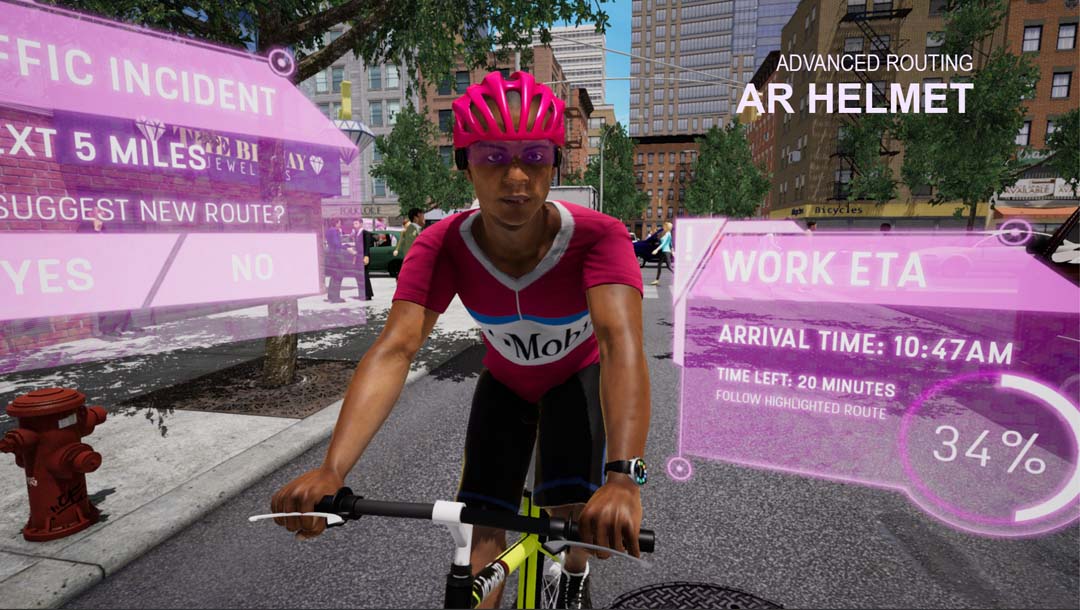The Intelligence of Things
Samsung
Pervasive 5G and Brighter Possibilities
Background
5G technology is moving into the marketplace. The fifth generation wireless broadband technology based on the 802.11ac standard is progressing and, ultimately, will enable the “Intelligence of Everything” with low-latency wireless speed up to 1 Gb/s. Ultra fast connectivity is likely to support new business applications and a smarter Internet of Things. And will certainly re-invigorate industries by enabling everything from smarter homes to business to autonomous vehicles.
Samsung has a differentiated advantage when it comes to 5G networks. It is the only OEM with a vertical integration approach to 5G. In essence, Samsung chipset enables the technology, while routers, small cells and remote radio heads distribute it to enable communications between devices and things. The integrated approach allows network operators to talk to all of the IoT ecosystem.

A Not So Distant Future
Samsung asked us to develop a highly interactive experience to demonstrate use cases where 5G will be impactful, with focus on the end user experience and wow factor. We started by considering the actual opportunities in a dense city environments: multiply the speed of your current data connection 10 to 100 times, cut responsiveness delays (latency) to “almost zero,” improve security, and dramatically increase the network’s reach — these are the promises of fifth-generation (5G) cellular technology. Powered by higher-bandwidth radio signals, multiple antennas working together, and faster processors, 5G will likely blur the line between wired and wireless broadband. In the words of Samsung executive Tim Baxter, he called 5G “is like putting fiber [optics] into your pocket.”
The 5G demonstration had to interact seamlessly in real-time between Samsung devices and content as part of a showroom / trade show experience. It had to showcase Samsung’s hardware vertical integration as well as to illustrate compelling use cases for 5G.

From Home, To Smart Cities.
Our research lead us to consider building an entire 3D environment paired with physical hardware to show 5G devices, the network and user cases in parallel. Using a dynamic responsive smart interface, as devices became “active” they fed a series of screens allowing multiple simultaneous users to interact with content. We developed 12 use cases in total, from home entertainment showing how the new 5G chipset ecosystem will enable the technology, VR/AR and electronics, to smart cities billboards, transit and wearables.
5G has a lot to offer when it comes to Augmented Reality (AR). As such, we build a model where users could see the metadata from a conceptual AR helmet to see how they will leverage the 5G network technology to provide enhanced safety and navigation capabilities to bicyclists and motorcyclists. AR was also showcased as an enhanced and personalized shopping experience based on targeted advertising enabled by a 5G network, social media and IoT ecosystem.
Another use case focused on healthcare showing wearable IoT devices connected through mobile 5G technology providing enhanced human interaction and empowered users for improved health and fitness enabled by the 5G-IoT Ecosystem.
Smart cities use cases showed smart public transport with an enhanced dynamic display with live / customized public transportation information based on pedestrian's travel schedule, all enabled through 5G networked IoT Ecosystem. Traffic Management was another use case displaying moother traffic flow and enhanced safety through intersections based on 5G enabled IoT Ecosystem.
Perhaps one of the most compelling cases for 5G is demonstrated by the need for zero latency in autonomous vehicles. The new 5G Network will further enhance vehicular safety and navigation by augmenting the V2x/IoT ecosystem through facilitating real time 5G network enabled AR overlays.
The 3D city flyovers and interactive allowed users to see how digital signage can be dynamically updated based on real-time crowd-source data while targeting the audience of pedestrian and vehicular traffic and status of live public events. The IoT Ecosystem will be enabled by 5G also providing enhanced safety and navigation in case of public emergencies.
Last, 5G will make possible 360 degree and immersive live streaming empowering performers of all types to reach large public audiences and advertise through new 5G-enabled VR Ecosystem.
